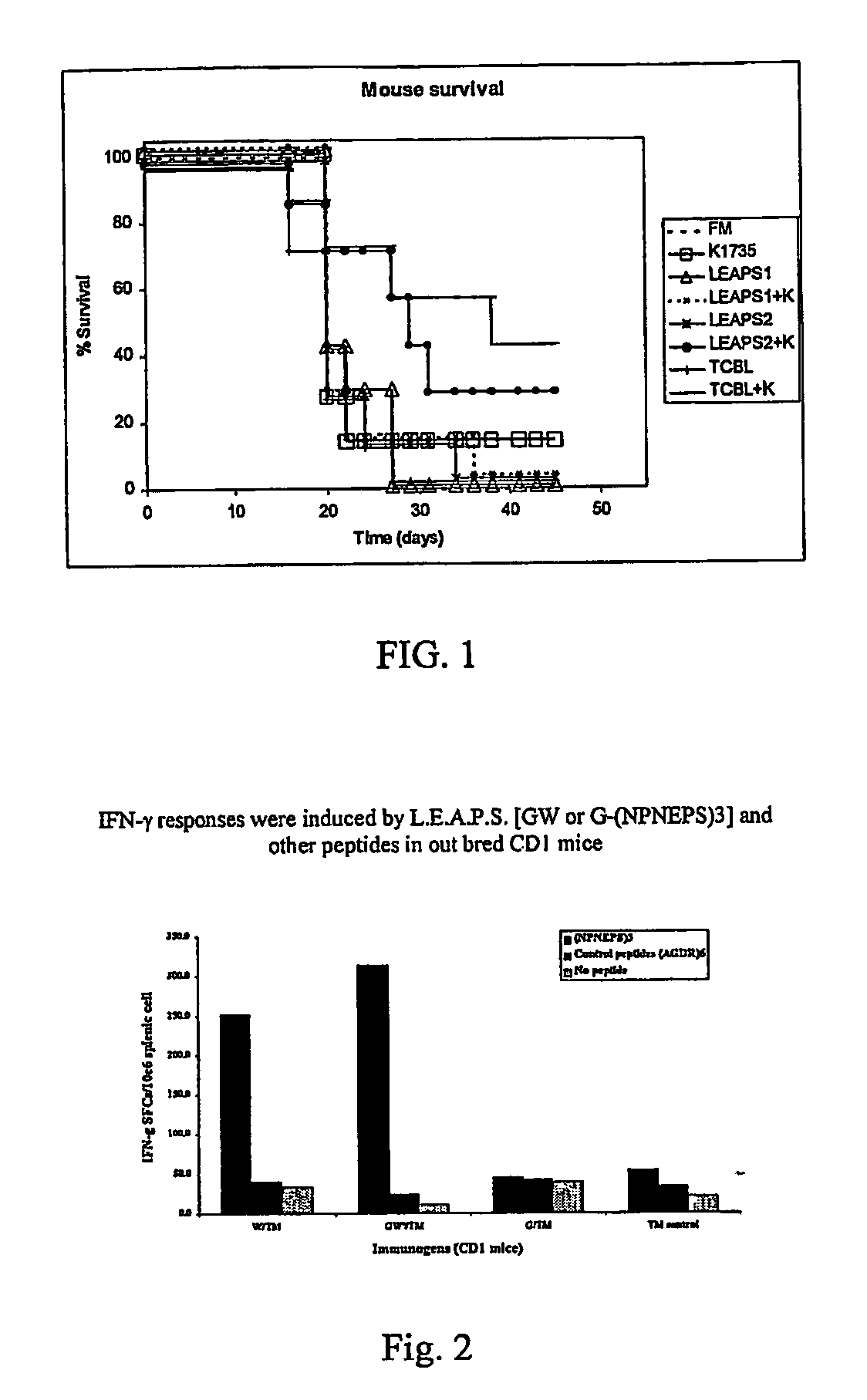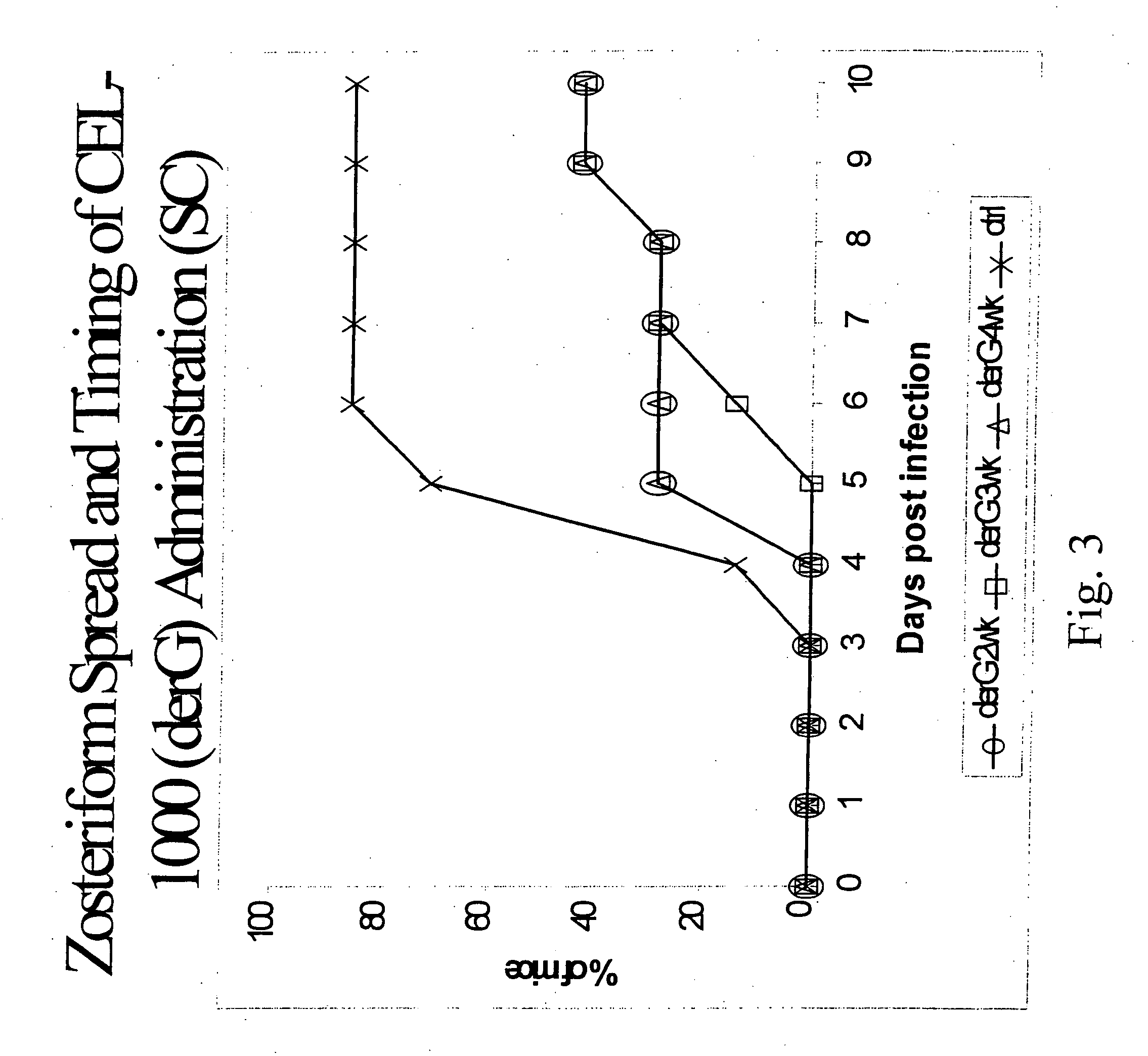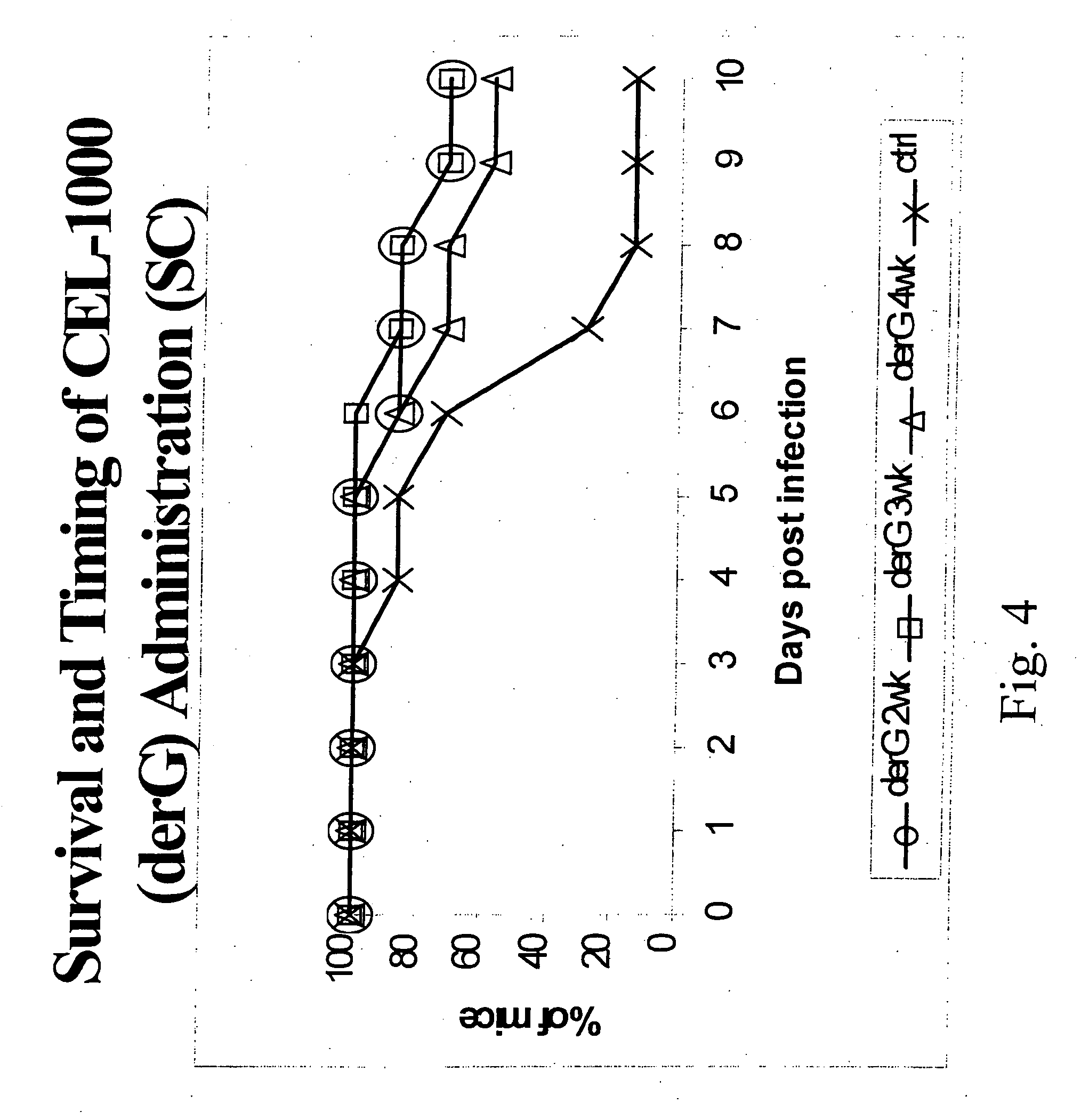Methods for treating diseases or conditions with peptide constructs
a technology of peptides and constructs, applied in the field of peptides, can solve the problems of difficult to assess which tcbl is active, no protection of balb/c strain, and only minor efficacy of allogeneic vaccines
- Summary
- Abstract
- Description
- Claims
- Application Information
AI Technical Summary
Problems solved by technology
Method used
Image
Examples
example 1
[0117] This example demonstrates the improved efficacy of a cancer vaccine utilizing peptide constructs according to the present invention as shown in FIG. 1.
[0118] Peptide constructs were prepared using as T cell binding ligand, either derG (SEQ ID NO. 7), Peptide G (SEQ ID NO. 5). The peptides are synthesized using the FMOC procedure and a double coupling protocol for the first 8 residues. Usually the peptide is prepared with the carboxyl terminus as an amide form. All of the peptides are purified using preparative HPLC, and analyzed by an analytical HPLC, amino acid analysis and mass spectrophotometer. The peptides are greater than 95%, usually greater than 98%, pure by HPLC criteria. The dry peptides are stored in vials with desiccant at −8° C. [0119] 1) Eight groups of seven mice were injected with 200 μl of the vaccine as shown in FIG. 1. [0120] 2) This was repeated after 7 days. [0121] 3) A further 7 days later, mice were challenged with 200 μl saline containing 5×104 live B...
example 2
[0128] This example demonstrates the improved biological activity of peptide constructs according to the present invention in comparison to similar peptide constructs and conventional peptide-immunogenic carrier constructs.
[0129] Peptide constructs were prepared using as T cell binding ligand, either derG (SEQ ID NO. 7), Peptide G (SEQ ID NO. 5).
[0130] The peptides are synthesized using the FMOC procedure and a double coupling protocol for the first 8 residues. Usually the peptide is prepared with the carboxyl terminus as an amide form. All of the peptides are purified using preparative HPLC, and analyzed by an analytical HPLC, amino acid analysis and mass spectrophotometer. The peptides are greater than 95%, usually greater than 98%, pure by HPLC criteria. The dry peptides are stored in vials with desiccant at −8° C.
[0131] Evaluation of the TCBL's biological activity when used as an additive or as an immunostimulant showed desirable results in malaria protection assays. As shown...
example 3
[0138] Since derG alone was able to protect A / J mice against Plasmodium yoelii sporozoites challenge, in the absence of malaria antigen, a similar experiment was conducted to evaluate the protective efficacy of derG in three other mouse strains: BALB / c (H2d), C3H / HeJ (H2K) and hybrid CAF1 (A / J×BALB / c).
[0139] Groups of 10 mice were pre-treated 2 times at 3 week intervals with 25 μg of derG in TiterMax™ adjuvant and challenged with 100 Plasmodium yoelii sporozoites. Protective efficacy was evaluated as described above.
[0140] The results indicate that derG also protects C3H / HeJ but not BALB / c and hybrid CAF1 (A / J×BALB / c).
TABLE 7Protection from sporozoite challenge in differentmouse strains pre-treated with derGGroup #Mouse strainsantigen*doseProtection1A / JderG / TM25 μg802A / JTM03A / JNaïve04BALB / cderG / TM25 μg05BALB / cTM106BALB / cNaïve07C3HderG / TM25 μg408C3HTM09C3HNaïve010CAF1 hybridderG / TM25 μg4011CAF1 hybridTM012CAF1 hybridNaïve0
PUM
| Property | Measurement | Unit |
|---|---|---|
| temperatures | aaaaa | aaaaa |
| OD | aaaaa | aaaaa |
| time | aaaaa | aaaaa |
Abstract
Description
Claims
Application Information
 Login to View More
Login to View More - R&D
- Intellectual Property
- Life Sciences
- Materials
- Tech Scout
- Unparalleled Data Quality
- Higher Quality Content
- 60% Fewer Hallucinations
Browse by: Latest US Patents, China's latest patents, Technical Efficacy Thesaurus, Application Domain, Technology Topic, Popular Technical Reports.
© 2025 PatSnap. All rights reserved.Legal|Privacy policy|Modern Slavery Act Transparency Statement|Sitemap|About US| Contact US: help@patsnap.com



